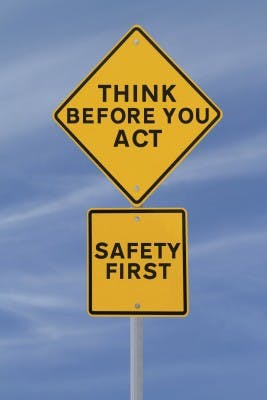By Howard Mavity
An effective safety process requires consistent discipline to support other company safety efforts, but it doesn’t happen.
OSHA is aggressively suing employers for allegedly using safety rules to terminate employees for reporting workplace injuries. And in fact, it often turns out that almost the only employees terminated for safety violations were those terminated for unsafe behavior after an injury.
Why? The employer was sloppy about disciplining employees for unsafe behavior, and the only time the employers “caught” employees acting unsafely was … investigating the injury.
Lack of regular safety-related discipline
Employers seldom successfully assert the “unpreventable employee misconduct/isolated incident” affirmative defense to employee OSHA violations. Why? The employer cannot prove that they manage an effective safety program, including:
- Documented safety rule or procedure;
- Proof that the employee was trained;
- Evidence of employer’s efforts to monitor and enforce the safety program; AND,
- Past disciplines for unsafe behavior (more than an oral warning or chewing-out).
You guessed it. Employers generally cannot show the element of regular safety-related discipline. (For a rare example of the employer succeeding, read the decision of a case one of my partners handled).
Even safety conscious employers don’t adequately discipline
Fisher & Phillips’ 2012-2013 survey of large general contractors with some of the U.S.’s best safety programs revealed that 56% were “not satisfied by how often supervisors discipline employees for unsafe behavior.”
To give you an idea of just how well these respondents are doing in other more costly safety efforts:
- 43 percent provide OSHA 30-hour training to over 75 percent of supervisors.
- 59 percent -formally include safety in executive performance evaluations (Wow!).
- 61 percent use observation systems requiring supervisors to make regular.
Observations of compliance and non-compliance
So, over one-half of some of the most safety-oriented employers admit that safety-related discipline is not where it should be.
Why?
Various surveys list one of the following reasons why supervisors do not discipline employee:
- The supervisor is afraid that they will get their employers in trouble.
- They haven’t been trained and don’t know how.
- They came up through the ranks.
- Discipline is only discussed when something bad happens, like a lawsuit.
Another question from Fisher & Phillips’ Survey supplies a partial answer — most companies make almost no consistent effort to train supervisors when and how to discipline employees.
How often is HR training provided?
How often do you provide “HR” training to frontline supervisors (i.e. How to discipline employees)?
- Rarely — 37 percent;
- Occasionally — 25 percent;
- Annually — 22 percent;
- More than once a year — 7 percent;
- We have a formal supervisory program or company “university” — 7 percent.
So only 7 percent maintain a formal supervisory training program and another 7 percent provide HR-training more than once per year.
I believe that the action points are pretty clear.
This was originally published on Fisher & Phillips’ Workplace Safety and Health Law Blog.
